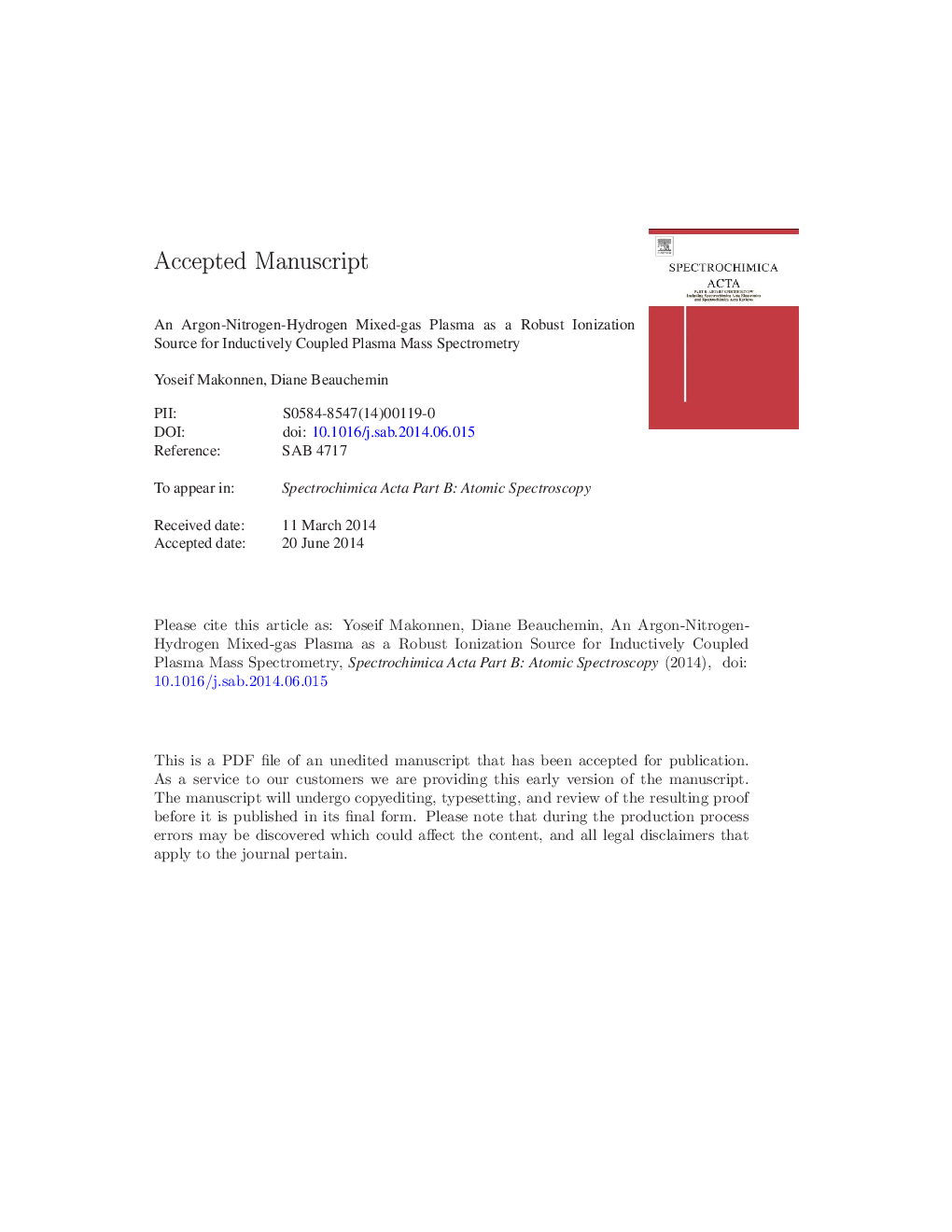| Article ID | Journal | Published Year | Pages | File Type |
|---|---|---|---|---|
| 7674701 | Spectrochimica Acta Part B: Atomic Spectroscopy | 2014 | 26 Pages |
Abstract
Multivariate optimization of an argon-nitrogen-hydrogen mixed-gas plasma for minimum matrix effects, while maintaining analyte sensitivity as much as possible, was carried out in inductively coupled plasma mass spectrometry. In the presence of 0.1 M Na, the 33.9 ± 3.9% (n = 13 elements) analyte signal suppression on average observed in an all-argon plasma was alleviated with the optimized mixed-gas plasma, the average being â 4.0 ± 8.8%, with enhancement in several cases. An addition of 2.3% v/v N2 in the outer plasma gas, and 0.50% v/v H2 to the central channel, as a sheath around the nebulizer gas flow, was sufficient for this drastic increase in robustness. It also reduced the background from ArO+ and Ar2+ as well as oxide levels by over an order of magnitude. On the other hand, the background from NO+ and ArN+ increased by up to an order of magnitude while the levels of doubly-charged ions increased to 7% (versus 2.7% in an argon plasma optimized for sensitivity). Furthermore, detection limits were generally degraded by 5 to 15 fold when using the mixed-gas plasma versus the argon plasma for matrix-free solution (although they were better for several elements in 0.1 M Na). Nonetheless, the drastically increased robustness allowed the direct quantitative multielement analysis of certified ore reference materials, as well as the determination of Mo and Cd in seawater, without using any matrix-matching or internal standardization.
Related Topics
Physical Sciences and Engineering
Chemistry
Analytical Chemistry
Authors
Yoseif Makonnen, Diane Beauchemin,
